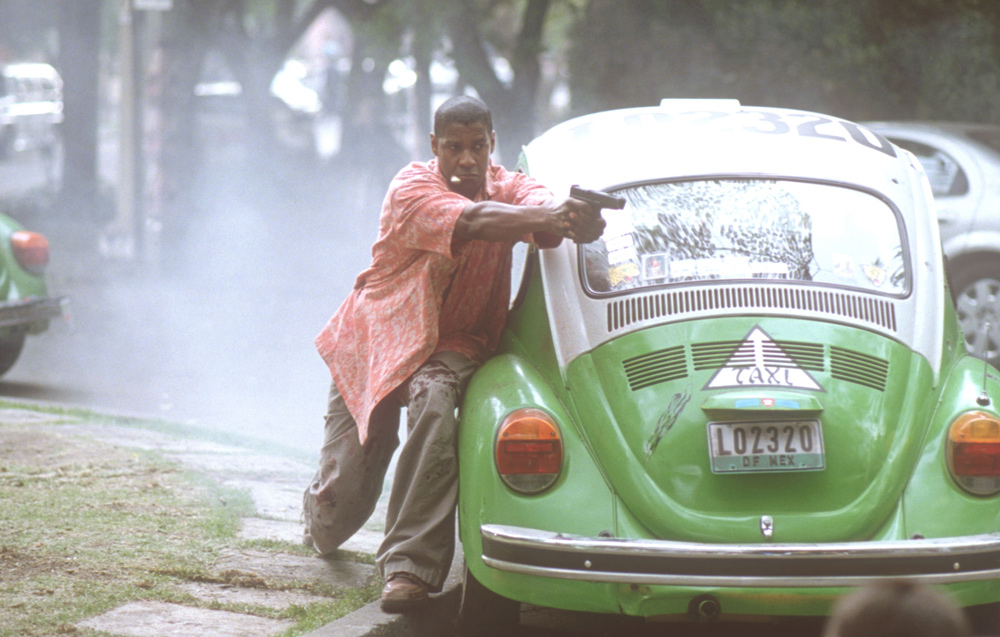
(c) Photofest / Getty Images
“Man on Fire” is a masterpiece that combines a love story and a revenge drama through the heroic life of the main character and the various productions of a master craftsman.
2022.05.23
Surprising photography method devised from pool scenery
Another thing that stands out in this film is the variety of visuals that are unique to Tony Scott. The refined "subtitles and captions" are particularly important. These are used effectively to bring out a vividness that can only be expressed in the local language, and by deliberately displaying keywords that pop up in the dialogue as text, the information is imprinted accurately in the minds of the audience. There is also a scene in the second half where a time limit is displayed to explosively increase the sense of tension. The font, timing, and size of this technique make it in a way inventive.
Another thing worth noting is the psychological portrayal in the second half of the film, in which Denzel Washington is wounded by numerous bullets and is faced with one shocking The Truth after another, but desperately tries to remain conscious.
At the time, Scott felt that "something was missing" in expressing the inner world of this heroic protagonist, and by chance, he looked down from the window of the hotel where he was staying in the courtyard pool. There, he saw a man who looked like a father spinning a child floating in a rubber dinghy in the water. This sight gave him an idea: "I see!"
The reason why the director felt it was "lacking" was because the main character and the background were integrated. If he could separate them and create a scene in which the main character seems to be shaken off from the background, he thought that there would be no better psychological depiction than this.

"Man on Fire" (c)Photofest / Getty Images
So he created a device that spun around like a merry-go-round, capturing a picture of Washington from the front on with a camera, while the background swayed along with it.
When I watched the film, I thought that this technique was used particularly prominently in the latter half, in a scene where he stands on the roof of a house in a slum area.
In any case, this is a testament to Tony Scott's unique imagination and agility, as he is able to grasp which idea is appropriate for which depiction with what could be called a painter's intuition.
No, this is not limited to "Man on Fire." Each of his films is such a rich masterpiece that we are drawn to his work again and again, driven by the impulse at various times in our lives, and each time we discover something new, realizing that the fountain of emotion is still flowing.
He used the presence of actors and camerawork like paint and brushes, and even gunpowder, weapons, and technology to dynamically paint epic, moving pictures. Tony Scott's legacy is so great. There will never be another artist like him again.
Reference material: "My Bodyguard" DVD audio commentary

